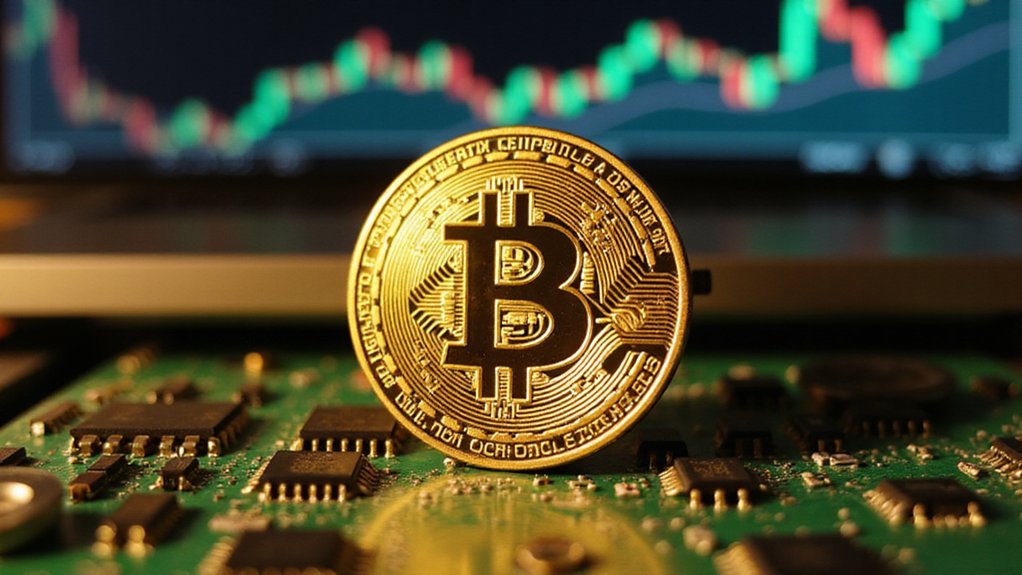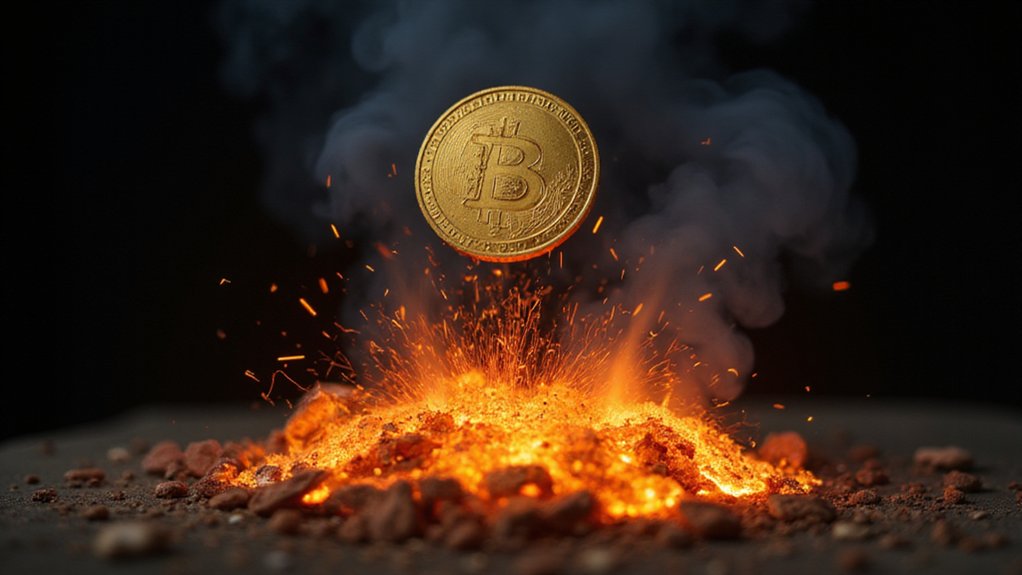Bitcoin’s evolution from Satoshi Nakamoto’s 2009 creation to recognized asset class represents financial alchemy writ large. Initially worthless, then famously exchanged for pizza (at what must surely be history’s most expensive meal in retrospect), Bitcoin survived exchange collapses and regulatory skepticism to achieve institutional legitimacy. With three halvings completed—most recently reducing block rewards to 3.25 BTC in April 2024—and a hard cap of 21 million units, scarcity remains the cornerstone of its digital gold narrative.

A digital revolution, sparked by an anonymous creator and fueled by cryptographic innovation, has fundamentally altered the landscape of global finance over the past fifteen years.
On January 3, 2009, Satoshi Nakamoto mined Bitcoin’s genesis block, launching a monetary experiment with a predetermined supply cap of 21 million units—a deflationary design that would later underpin the “digital gold” narrative.
A revolutionary monetary system, limited to 21 million coins, emerged when Satoshi mined the first Bitcoin block in 2009.
The nascent currency, initially valueless in fiat terms, found its first real-world application when an intrepid user exchanged 10,000 BTC for two pizzas in 2010 (a transaction that would become increasingly painful to contemplate with each passing bull cycle).
Bitcoin’s price trajectory has resembled nothing so much as a financial rollercoaster—oscillating from virtual worthlessness to nearly $30 in mid-2011, only to retreat to single digits months later.
The cryptocurrency’s first halving event in November 2012 reduced mining rewards and coincided with a period of relative price stability, ending the year at a modest $13.50.
However, this consolidation phase preceded an explosive 2013, when Bitcoin’s valuation catapulted beyond $100 and eventually surpassed $230 within weeks—attracting both speculative investors and regulatory scrutiny.
As media coverage intensified and the first Bitcoin ATMs appeared¹, the cryptocurrency gradually transcended its cypherpunk origins to become recognizable, if not yet accepted, in mainstream financial discourse.
The catastrophic collapse of Mt. Gox exchange in 2014 resulted in substantial theft and price decline, testing investor confidence but ultimately proving Bitcoin’s resilience in the face of adversity.
Institutional participation, once unthinkable for an asset born from libertarian ideals, has increasingly normalized Bitcoin as a legitimate financial instrument.
The 2025 executive order establishing the U.S. Strategic Bitcoin Reserve solidified Bitcoin’s status as digital bullion, legitimizing it as a sovereign reserve asset alongside traditional gold holdings.
The recent approval of Bitcoin ETFs in 2024 represents perhaps the most significant milestone in this mainstreaming process, allowing traditional investors to gain exposure without directly holding the asset.
The most recent halving event on April 19, 2024 reduced the block reward to 3.25 BTC, further reinforcing Bitcoin’s scarcity narrative and potentially influencing its long-term value proposition.
Bitcoin’s evolution from digital curiosity to recognized asset class demonstrates how technological innovation can penetrate established financial systems—even as those systems initially resist, then gradually accommodate, and finally embrace the very disruption they once dismissed.
¹The first such machine was installed in Vancouver, facilitating fiat-to-crypto conversion.
Frequently Asked Questions
How Does Bitcoin Mining Actually Work?
Bitcoin mining involves solving complex cryptographic puzzles through SHA-256 hashing.
Miners compete to find a nonce that, when combined with transaction data, produces a hash below the network’s target threshold.
This proof-of-work system requires significant computational power, with successful miners rewarded with newly minted bitcoins (currently 6.25 BTC) plus transaction fees.
The process simultaneously validates transactions, secures the network, and—rather elegantly—distributes new currency according to contributed computing resources.
What Makes Bitcoin Different From Traditional Currencies?
Bitcoin differs from traditional currencies in several fundamental ways.
Unlike fiat money controlled by central banks, Bitcoin operates on a decentralized blockchain network, immune to governmental monetary policies.
Its fixed supply cap of 21 million coins contrasts sharply with the potentially unlimited printing of conventional currencies.
Transactions occur peer-to-peer without intermediaries, offering greater privacy and reduced fees.
While traditional currencies derive value from government backing, Bitcoin’s worth stems from network consensus, utility, and scarcity—making it simultaneously more volatile and censorship-resistant.
Can Governments Regulate or Ban Bitcoin?
Governments can attempt to regulate Bitcoin through licensing requirements, taxation frameworks, and anti-money laundering provisions, but its decentralized architecture presents formidable challenges to total control.
While jurisdictions like China have implemented outright bans, these measures typically drive activity underground rather than eliminate it.
Bitcoin’s borderless nature enables regulatory arbitrage, with restrictions in one country often redirecting innovation elsewhere.
The technology’s censorship-resistant design ultimately renders complete prohibition virtually impossible, regardless of regulatory ambition.
How Do Bitcoin Transactions Remain Secure?
Bitcoin transactions remain secure through a robust architecture combining SHA-256 encryption, asymmetric cryptography, and digital signatures—ensuring only legitimate owners can transfer funds.
The decentralized network’s consensus mechanism requires majority validation, while immutable ledger replication prevents retroactive tampering.
Proof of Work’s computational demands deter attackers by necessitating prohibitive resources to compromise the system.
This multilayered defense (where each element reinforces others) creates a remarkably resilient financial protocol that has withstood over a decade of attempted breaches.
What Determines Bitcoin’s Price Fluctuations?
Bitcoin’s price fluctuations are determined by a complex interplay of supply-demand mechanics, institutional activity, and market psychology.
The fixed 21-million cap creates scarcity while halvings reduce new issuance, driving cyclical bull runs.
ETF approvals, corporate treasury acquisitions, and regulatory decisions shape institutional flows.
Meanwhile, technical indicators and whale movements influence trader sentiment.
Macroeconomic factors—inflation hedging, interest rates, geopolitical instability—further impact price action, as does competition from alternative cryptocurrencies offering different value propositions.









